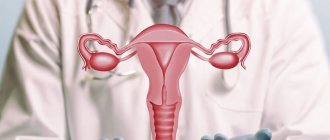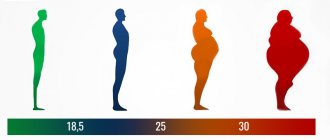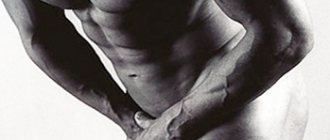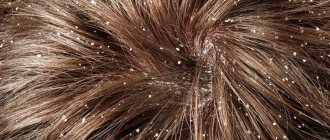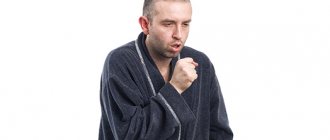What does dandruff look like?
White flakes, clearly visible on dark clothes, are nothing more than dandruff. It consists of scaly particles of keratinized skin, appears at the roots of the hair, and then easily falls off. Most often, the disease is provoked by the activity of the Malassezia fungus. It is present on the skin of every person, but only under certain conditions does it begin to multiply and cause dandruff.
When the fungus on the scalp becomes active, a person feels itchy. Depending on the reasons that caused the spontaneous reproduction of microorganisms and the characteristics of the sebaceous glands, seborrhea (this is what the disease accompanied by peeling is called) is divided into dry, oily, and mixed. It can also manifest itself in other forms.
Tips for a quick recovery
Regardless of the cause of dandruff in women during the treatment period, it is important to adhere to the following rules:
- Strictly follow the instructions and prescriptions of your doctor.
- Remember, alcohol-containing products dry out the skin greatly, they will only complicate the problem.
- Do not scratch or scratch your head, so as not to injure the integument. Through wounds you can introduce an infection and cause suppuration.
- Use a soft, non-metallic comb.
- Avoid blow-drying, styling with tongs, or straightening.
- Use high-quality, medicated shampoos.
- You cannot dye your hair or use aggressive styling products. Pay more attention to nutrition and hydration.
- Review your diet, add more healthy foods, fresh fruits and vegetables to your diet. Avoid alcohol, fried, salty and smoked foods. This diet helps normalize metabolism and speed up recovery.
Dry seborrhea
If there is a lack of activity in the sebaceous glands, dry seborrhea can occur. The reason is not only low sebum production, but also:
- stress, anxiety, psychological shocks;
- hereditary factors;
- hormonal disruptions (puberty or abnormalities in the functioning of the glands);
- use of incorrectly selected cosmetics, as well as cosmetic paints with ammonia;
- poor hygiene, excessively frequent hair washing and blow-drying;
- lack of vitamins (this affects the general health and functioning of the glands).
A deficiency of sebum contributes to the appearance of inflammatory processes on the scalp, which provoke the proliferation of Malassezia fungi. Symptoms of dry seborrhea:
- discoloration, dryness and brittleness of hair;
- formation of cracks in the epidermis;
- the appearance of large scales that quickly peel off.
If measures are not taken, dry seborrhea moves into the next stage. In addition to dandruff, a person is bothered by redness of the skin and seborrheic spots. Sometimes dry seborrhea is an advanced form of oily seborrhea, in other cases the problem arises on its own.
Oily seborrhea
If too much sebum is produced, this can also lead to dandruff. The fact is that the secretion does not contain enough antibacterial substances. Favorable conditions are created for an increase in fungal colonies. The active activity of Malassezia leads to detachment of the epidermis and the appearance of oily dandruff.
Symptoms of oily seborrhea:
- greasy hair;
- itching;
- The scales stick together and peel off very poorly.
Oily seborrhea is often accompanied by acne and furunculosis. The skin of the scalp becomes crusty; scratching during itching leads to bloody wounds. If adequate treatment is not carried out, hair will begin to fall out.
Seborrhea, associated with increased sebum production, occurs not only on the scalp. It also appears on the face, especially in the area of the nasolabial triangle, behind the ears and on the chin. On the face, the disease is characterized by enlarged pores and graying of the skin.
The most common cause of oily seborrhea is hormonal imbalances. The disease often plagues adolescents during puberty. Most often, young men suffer, because it is male hormones that provoke the activity of the sebaceous glands.
Normally, seborrhea is temporary; by the age of 25, it goes away in most people. In 10% of cases the disease becomes chronic.
Another common cause of oily seborrhea is genetics.
Also, the impetus for the disease can be:
- frequent stress;
- deviations in the functioning of the nervous system;
- taking hormones;
- problems with the gastrointestinal tract;
- diseases of the genitourinary system.
Treatment methods
The main task in the treatment of dandruff is to eliminate the cause that causes it, seborrhea, and also to minimize the influence of the factors that caused the appearance of the latter. With the right treatment, the main symptoms of dandruff – flaking and itching – will go away fairly quickly. Procedures can be divided into two types: therapeutic and preventive. After the treatment prescribed by the trichologist, prevention is necessary so that seborrhea does not return. This is especially important if it is impossible to eliminate the cause of seborrhea (for example, heredity or chronic diseases).
One of the most effective drugs for combating any type of dandruff is the antifungal substance ketoconazole. (7) It suppresses the activity of the Malassezia fungus, an increase in the number of which leads to the occurrence of various types of seborrhea and the appearance of dandruff. Ketoconazole is included in some medicinal shampoos and, in particular, “Perhotala”, which is available in two forms: with 2% ketoconazole for treatment and with 1% ketoconazole for prevention. A serious advantage of ketoconazole is that it relieves symptoms of concomitant infectious diseases, for example, pityriasis versicolor, which has been clinically proven. (8)
Mixed seborrhea
Mixed seborrhea has characteristics of dry and oily varieties. In particular, patients note that the skin on the face in the middle part is oily, and on the cheeks it is dry. Especially a lot of fat is released in the areas of the crown, chin, forehead, and nose. In other places the fat content is moderate or insufficient.
Doctors also note that a person may be bothered by dry dandruff and oily skin on the face.
Symptoms of mixed seborrhea:
- inflammatory process on the cheeks, scalp, chin, forehead, chest, nose;
- in the area of inflammation, the skin becomes rough;
- redness, itching;
- increased secretion of sebum on the forehead, but decreased secretion in other areas of the face;
- peeling in the area of increased activity of fat-secreting glands, yellowish or gray scales;
- peeling of dry areas of skin.
All the factors listed above as causes of other types of the disease can provoke mixed seborrhea. Most often the problem is associated with hormonal changes or disruptions. Heredity plays an important role. Stress and anxiety can also contribute to the growth of fungi.
Features of diagnosing hair fungus
A specialist can determine the presence and type of fungus relatively easily and reliably with the help of laboratory tests using microscopic and cultural methods. The first involves taking hair and skin flakes from the patient to examine for the presence of mycelial spores, gas bubbles, and fragments of large mushrooms. The cultural method is used if the presence of a fungus is nevertheless detected and allows one to determine the specific type of mycelium that has colonized the patient’s scalp. To do this, the detected fungus is grown in a nutrient medium, after which the grown colony is examined, in particular, the growth pattern is assessed (the process takes several days).
One of the modern tools used to determine mycosis is a Wood's lamp. The device emits a wave of a certain length and allows you to illuminate the colonies, giving an idea of the size and location, but not providing an answer regarding the type of microorganism, and therefore the treatment tactics.
Tubular seborrhea
This is a special type of seborrhea, the main symptom of which is the formation of scales not on the scalp, but on the hair. This is explained by the fact that the active reproduction of the Malassezia fungus began precisely on the hairline. Dandruff looks like small tubes, which are sometimes confused with nits.
Tubular seborrhea is also characterized by severe itching and redness. Most often it occurs in adolescence, when hormonal levels are actively restructured.
Also, the causes of tubular dandruff can be:
- lack of vitamins;
- metabolic disease;
- improper or insufficient hygiene;
- improper or poor nutrition, diets;
- physical and emotional stress;
- skin diseases;
- chronic illnesses, hepatitis, HIV and other diseases that reduce immunity.
Clinical researches
The effectiveness of ALERANA® shampoo has been clinically proven in the DERMSCAN laboratory. Sederma. Laboratory specialists confirmed that with a course of use of Procapil, the amount of hair in the growth phase increased in 67% of patients.
Action:
- blocks the proliferation of fungus that causes dandruff
- eliminates flaking of the scalp, increasing the access of oxygen to the hair follicles
- stimulates cellular metabolism in hair follicles
- promotes the growth of strong and healthy hair
2 formulas of the vitamin-mineral complex “Day” and “Night” ensure compatibility of the components, have a synergistic effect, and act taking into account the daily rhythm of hair growth.
Action:
- provides hair follicles with substances necessary for growth and development
- reduces hair loss
- improves the condition of hair and scalp
- promotes a healthy glow
- has a general strengthening antioxidant effect.
Seborrheic dermatitis
When listing the types of dandruff, one cannot fail to mention seborrheic dermatitis. This is a general term for diseases that are associated with the active proliferation of fungi, the formation of crusts, redness, itching and peeling.
Seborrheic dermatitis can occur with infectious diseases such as lichen, or non-infectious diseases - psoriasis, neurodermatitis. Symptoms appear on the skin in areas with impaired sebum secretion.
The fungus produces lipotic enzymes that break down fatty acids. When there are too many enzymes, an inflammatory reaction occurs on the skin. Outwardly, at first it looks like peeling. Scratching leads to the formation of bleeding wounds.
The symptoms of seborrheic dermatitis are similar to dandruff. However, we are talking about it only if more than 83% of the microflora of the scalp consists of pathogenic fungi. For dandruff, this figure is 74%. Thus, dandruff is the first stage of seborrheic dermatitis. If left untreated, it will lead to serious consequences.
Psoriasis and dandruff
Dandruff on the head appears not only due to the activity of the sebaceous glands and fungi. Sometimes scales on the hair occur with psoriasis. This is a common disease associated with heredity and the body's immune system. The disease is chronic, its therapy is designed to reduce symptoms.
Signs of psoriasis:
- the appearance of pink or red spots (occur not only on the head, but also on the arms, legs, and other parts of the body);
- gray scales on plaques;
- itching, sometimes pain.
An outbreak of this autoimmune disease can easily be confused with seborrhea. It is important to see a doctor on time, because the treatment of these ailments is very different.
Psoriasis appears between the ages of 15 and 35 years. Outbreaks of the disease can be caused by:
- poor nutrition;
- cold or dry air;
- stress.
The causative agent is not fungi, but the person’s own immunity, which attacks healthy cells, which causes active growth of the epidermis.
Therapy requires close supervision by a dermatologist. Both local and oral medications can be prescribed. Phototherapy, IV courses, and injections help relieve symptoms.
